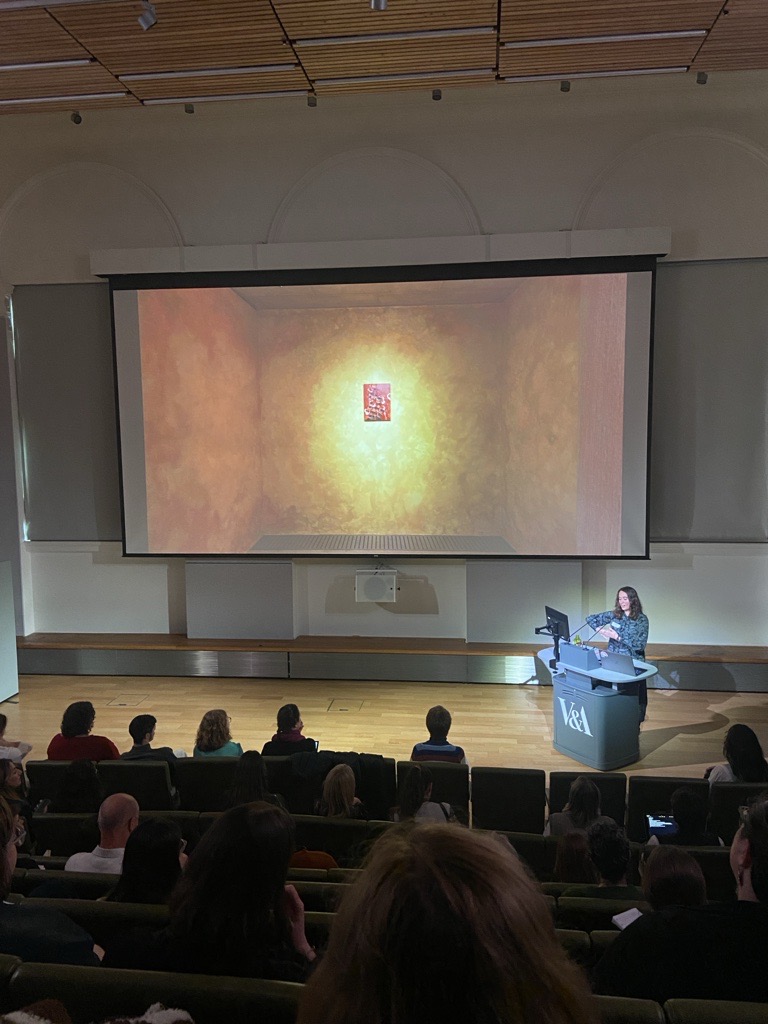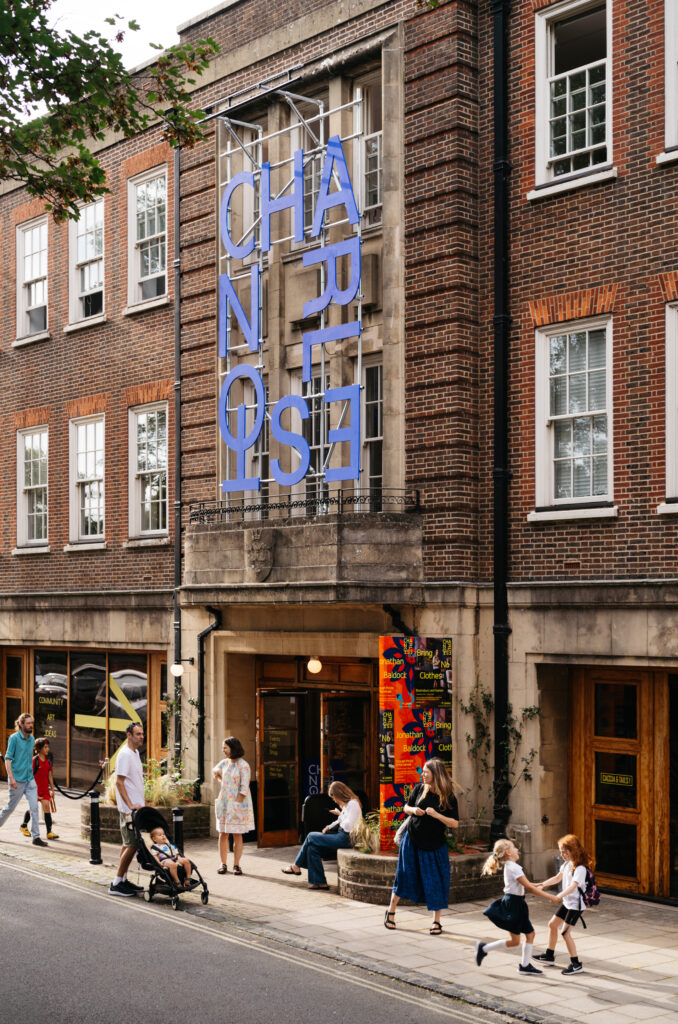The Full Picture: Navigating Logistics, curation and relationships in coordinating a travelling exhibition from start to finish – Lily Rose Grant, Collection Director, The Perimeter
Blog written by Polly Jones, Exhibitions and Project Manager, Charleston
The Perimeter, which opened in 2018, is a public exhibition space which houses a private art collection. Founder Alexander V. Petalas originally wanted an office to show a few of his works in, but came across an exceptional mews house in Bloomsbury. After developing the space with 6a Architects, they initially invited groups of eight people to see the collection once a week thinking there wouldn’t be interest in it, but The Perimeter is now open five days a week with a free exhibition programme of three shows a year.
Lily outlined her role as Collection Director: delivery of exhibitions, events, publications as well as care for the private art collection. Lily is part of a team of two people. As the team is small, they have streamlined project management skills and manage their external relationships strategically to maximise their team’s limited resources.
Their process is to select an artist they’d like to showcase, which is usually someone who hasn’t had a big moment in London. They approach them with the offer of the space and ask them how they would most like to use it. These are often incubation exhibitions where artists use the opportunity to test out ideas. For example, Sarah Lucas showed large photographs of the artist eating a banana, printed on large vinyls. This idea was then used in her Tate Britain show.
For their current exhibition – Lewis Hammond: This Glass House – The Perimeter collaborated with the Kunstpalais in Erlangen, Germany, to bring the show to the UK for the second iteration of the exhibition. Lily explained some of the processes involved in translating the curation to a different space, along with some of the logistics involved.
Some of the works were in Germany and elsewhere, and transport costs made their inclusion prohibitive. The physical space was of course different: originally the exhibition had lots of arches, which wasn’t possible to reproduce. To overcome these challenges and manage the limitations of the new venue, Lily kept constant dialogue with the artist over WhatsApp, and used the same paint colours, and some key pieces in both shows to create cohesion.
Exhibition design also falls under Lily’s remit and she worked closely with the artist to make his vision a reality. For example, the usual flat wall colour was seen as too institutional and the artist wanted his works to emerge from the darkness. He wanted velvet wallpaper, which was a fire risk and prohibitively expensive. Lily creatively problem solved and instead they used a paint finishing technique which gave a similar effect – see image. However, this was problematic as the effect wasn’t successful – the paint started bubbling – so Lily had to correct it herself and repaint. Lily also gave some insight into working with a contemporary artist and managing their expectations, such as the desire for a tray of water for people to walk through. Lily had to explain carefully why this wouldn’t be possible in the space due to health and safety concerns.

As with all exhibition installs, not everything ran smoothly – doorways weren’t able to accommodate the works in some spaces; an error in shipping meant an extra work was accidentally included in the shipment without any customs paperwork, but as they had a good relationship with the transport agent they were able to push to get the paperwork in place to allow the works to travel just a couple of days later than scheduled.
Much of what Lily spoke about really resonated with me as I also work in a small team where my catch phrase has become ‘if not me, then who’ as I find myself up a ladder on a Sunday morning to get everything perfect. Sometimes the limitations of budget can produce creative and thoughtful outcomes, and the best resource you have is the relationships you build.

Images courtesy of Polly Jones

 Instagram
Instagram  LinkedIn
LinkedIn  Twitter
Twitter  My Account
My Account